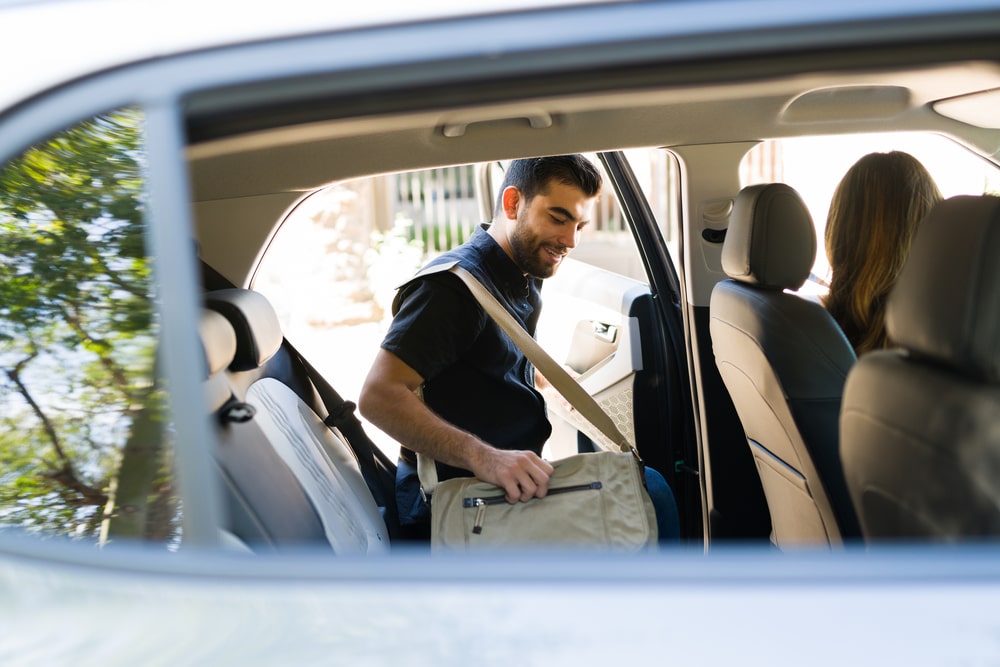Blog
Rideshare Drivers: Are You Covered in an Accident?
- March 01, 2024 Leer en Español

In recent years “Uber” has become a household name. The advent of rideshare transportation like Uber and Lyft, has transformed our lives, and with it comes additional rules for determining which automobile insurance policy will apply should an accident occur while operating a vehicle as a rideshare driver. The insurance policy applicable and the extent of that coverage depends on the “phase” of operation. Below is a brief guide into the “phases” of rideshare operation and what it means for you as an Uber, Lyft or rideshare driver.
Offline and Personal Use
When an Uber, Lyft or other rideshare driver is “offline” and the rideshare app is not engaged, the driver’s personal automobile insurance will apply should an accident occur.
Phase 1: App On, Waiting for a Ride Request
Once an Uber, Lyft or rideshare driver logs into the rideshare app and is waiting for a ride request, they enter Phase 1. During this period, the rideshare company’s commercial automobile insurance policy comes into play. This policy includes liability coverage for injuries sustained by others injured by the negligence of the rideshare driver and affords coverage of up to $50,000 per person/$100,000 per accident and property damage coverage in the amount of $25,000. Additionally, the policy affords personal injury protection benefits (medical coverage) and underinsured/uninsured motorist benefits to the rideshare driver in the amount of the New Jersey state minimums, which are currently $15,000 for medical coverage and $25,000 per person and $50,000 per accident for underinsured/uninsured.
The coverage and protections in Phase 1 are low and often insufficient to fully compensate an injured rideshare driver if injured by the negligence of another driver. The coverage is also generally insufficient to protect the rideshare driver from claims brought against him or her for injuries to others.
Phase 2: En Route to Pick Up Passengers
Once a ride request is accepted and the driver is en route to pick up passengers, the driver enters Phase 2. In this phase, the rideshare company’s automobile insurance coverage offers substantially better protection to rideshare drivers for liability and underinsured/uninsured motorist benefits. Drivers are entitled to bodily injury/property damage in the amount of $1.5 Million and underinsured/uninsured motorist benefits in the amount of $1.5 Million. While there is less coverage for medical expenses benefits in Phase 2 versus Phase 1, ($10,000), this level of coverage affords greater overall protection to the rideshare driver, passengers, and others injured in the accident compared to the coverage in Phase 1.
Phase 3: On Trip, Transporting Passengers
Phase 3 begins when a passenger enters the rideshare vehicle and is being transported to their destination. Here, the insurance coverage afforded by the rideshare company is the same as that afforded in Phase 2.
Understanding the insurance coverage afforded to you and the extent of such coverage is particularly crucial should an accident occur while operating your vehicle as a rideshare driver. As our world becomes more and more reliant on rideshare services, it's essential to be informed about the insurance protections in place at each stage of the ride. The attorneys at ANTONUCCI LAW can help you navigate the complexities of these legal issues and are available to assist you should you be involved in an accident.
If you or someone you know has been in an accident as a rideshare driver or passenger, contact Antonucci Law today. The consultation is free, but the advice is priceless.
